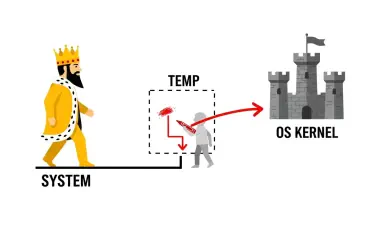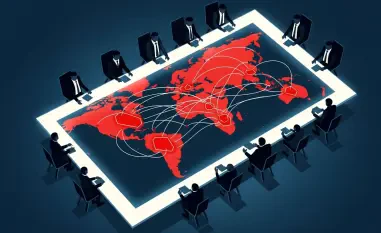In today’s digital landscape, technology and data have evolved from being mere support structures to becoming the central components of modern enterprises. These elements now pump vital capabilities and insights, creating value across organizations and driving innovation. As businesses increasingly rely on digital infrastructure, the need for robust cybersecurity measures has never been more critical. With ceaseless advancements in artificial intelligence (AI), digitization, and increased connectivity, the stakes are higher than ever. Companies must integrate cybersecurity as a strategic cornerstone to not only ensure operational continuity but also to safeguard value creation and enhance future prosperity.
The Imperative for Cybersecurity Investment
The rapid advancements in technology, such as AI, digitization, and increased connectivity, have transformed the business environment. Companies are now more reliant on digital infrastructure, making cybersecurity a strategic cornerstone rather than a supportive function. This proactive approach ensures operational continuity, safeguards value creation, and enhances future prosperity while unlocking AI’s potential. Global CEOs are acutely aware of the importance of cybersecurity. According to KPMG’s latest CEO Outlook report, 72% of global CEOs are concerned about their long-term prosperity, driving many to embrace advanced technologies like AI for sustainable growth.
Despite economic challenges, 64% of CEOs indicate their intention to invest in AI regardless of economic conditions. This widespread commitment to AI underscores the importance of cybersecurity to protect these investments. The significant emphasis on AI highlights how essential it is to incorporate cybersecurity measures from the ground up. As organizations continue to delve deeper into new frontiers of technology, investment in a robust cybersecurity infrastructure is critical. This investment acts as a guardrail, ensuring that growth and innovation are not deterred by potential cyber threats. Hence, cybersecurity is no longer optional but a fundamental requirement in the modern digital age.
Rising Cyber Threats and CEO Concerns
With the increasing reliance on digital infrastructures, the vulnerability to cyber threats also rises. A vast majority of CEOs (76%) believe that cybercrime and insecurity will negatively impact their organization’s prosperity in the coming years. This understanding creates a substantial challenge for CEOs – how to balance investment in innovative technologies while ensuring the security of their digital infrastructures. Integrating new technologies, such as generative AI, into legacy systems introduces new security risks that require specific measures. A unified security strategy encompassing both new and older technologies is essential.
Securing these systems often demands a sophisticated approach, balancing innovation and security investments. Sometimes, investing in modern security systems with AI capabilities might be more cost-effective than maintaining legacy systems. As cyber threats become more sophisticated, organizations must be vigilant and proactive in their approach to cybersecurity. This involves regular assessments, continuous monitoring, and implementation of advanced security protocols. The increasing need for cybersecurity measures highlights the growing awareness among CEOs of potential cyber threats. By prioritizing cybersecurity, CEOs can safeguard their organizations against potential losses, ensuring sustained success and trust among stakeholders.
The Evolving Role of the Chief Information Security Officer (CISO)
The role of the Chief Information Security Officer (CISO) has significantly evolved over the years. Historically, the CISO had limited tools – primarily firewalls, antivirus systems, and internal detection systems – to protect their organizations. However, advancing AI tools and the growing cybersecurity industry now provide a plethora of options to combat even the most niche risks. The CISO’s role has expanded to not only protecting against known threats but also ensuring that security measures support innovation. They need to act as risk managers, investment managers, and showcase the value of cybersecurity investments succinctly.
Additionally, leveraging AI for efficiency in security management can automate manual tasks, such as anomaly detection and data summarization. This expansion of responsibilities requires CISOs to be strategic thinkers, continuously updated on the latest cybersecurity trends and technologies. By remaining adaptive and proactive, CISOs can ensure that their organizations are equipped to handle emerging cyber threats. The role of the CISO now extends beyond technical expertise; it involves integrating cybersecurity into the broader organizational strategy. This strategic integration is essential for fostering an environment where innovation can flourish without compromising security.
Cultivating a Cybersecurity-Focused Culture
A cybersecurity-focused culture within organizations is crucial for ensuring long-term success and protection against cyber threats. Progressive CEOs and CISOs are integrating security and privacy considerations from the inception of tech investments. The secure-by-design approach, where cyber teams are empowered early in the tech investment process, helps in mitigating risks proactively and ensures seamless business operations. Such a proactive approach demands a cultural shift within organizations. According to the article, 74% of global CEOs believe building a strong cyber culture is indispensable for safely integrating AI into their operations.
This cultural shift involves educating employees about cybersecurity best practices and fostering an environment where security is a shared responsibility. By embedding cybersecurity into the organizational DNA, companies can create a resilient and adaptive business model. This cultural integration also promotes transparency and accountability, encouraging employees to report potential threats and vulnerabilities promptly. CEOs and CISOs must lead by example, demonstrating their commitment to cybersecurity through consistent and transparent communication. By prioritizing a cybersecurity-focused culture, organizations can effectively navigate the complexities of the digital age, ensuring their innovations are secure and their growth is sustained.
Balancing Innovation and Security Investments
Balancing innovation and security investments is a delicate act that organizations must master to stay competitive. As companies strive to stay ahead in the competitive landscape, they must ensure that their cybersecurity measures are robust enough to protect their innovations. This balance often requires a sophisticated approach, where investing in modern security systems with AI capabilities might be more cost-effective than maintaining legacy systems. The narrative emphasizes the necessity of a unified security strategy encompassing both new and older technologies.
Securing these systems often demands a sophisticated approach, balancing innovation and security investments. Sometimes, investing in modern security systems with AI capabilities might be more cost-effective than maintaining legacy systems. A well-balanced approach ensures that organizations do not compromise on innovation while maintaining high-security standards. By strategically allocating resources towards both innovation and security, businesses can achieve a sustainable growth model. This balance promotes a forward-looking strategy, where cybersecurity is viewed as an enabler of innovation rather than a hindrance. Organizations must continuously adapt and evolve their security strategies to keep pace with technological advancements.
Leveraging AI for Enhanced Cybersecurity
Leveraging AI for enhanced cybersecurity is a game-changer in the modern digital landscape. AI can automate manual tasks, such as anomaly detection and data summarization, making security management more efficient. This efficiency allows CISOs to focus on strategic initiatives and proactive threat mitigation. The article highlights the importance of AI in combating cyber threats. Advanced AI tools can identify and neutralize threats in real-time, providing a robust defense against cyberattacks. By integrating AI into their cybersecurity strategies, organizations can stay ahead of emerging threats and protect their valuable innovations.
The use of AI in cybersecurity significantly reduces response times to potential threats, allowing for swift and effective action. This proactive approach ensures that organizations are not just reacting to threats but are actively mitigating risks. AI-powered cybersecurity solutions can also provide predictive analytics, helping organizations anticipate and prepare for future threats. The integration of AI into cybersecurity strategies represents a paradigm shift in how organizations approach security. By leveraging the power of AI, businesses can create a dynamic and resilient cybersecurity infrastructure that evolves with the changing threat landscape.
The Future of Cybersecurity in a Digital World
In the contemporary digital era, technology and data have transitioned from being mere supporting elements to becoming the core components of modern businesses. These elements now deliver essential capabilities and insights that generate value throughout organizations and drive continuous innovation. As businesses increasingly depend on digital infrastructures, implementing robust cybersecurity measures becomes more crucial than ever. Given the relentless advancements in artificial intelligence (AI), digitization, and growing connectivity, the stakes for securing digital assets and information remain high. Companies must embrace cybersecurity as a strategic pillar to ensure uninterrupted operational continuity, protect the value created, and foster future growth and prosperity. Integrating cybersecurity into every level of business operations not only shields organizations from potential threats but also instills confidence among stakeholders and customers. As a result, businesses can focus on leveraging technology and data to their fullest potential, achieving sustainable growth in an ever-evolving digital landscape.













